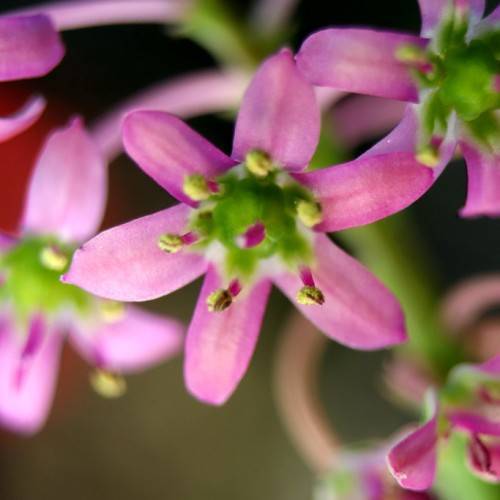
Cooper’s African hyacinth
Ledebouria cooperi
Cycle:
Perennial
Watering:
Average
Hardiness Zone:
7 - 10
Flowers:
Flowers
Sun:
full sun,part shade
Leaf:
Yes
Growth Rate:
Low
Maintenance:
Low
Drought Tolerant:
Yes
Salt Tolerant:
Yes
Indoors:
Yes
Care Level:
Moderate
watering
Cooper's African hyacinth should be watered once a week, with about 4 to 6 tablespoons of water. In warm and dry climates, it may need more, so keep an eye on the soil to ensure that it is moist but not waterlogged. During the cooler months, it should need less water. It is best to water Cooper's African hyacinth in the morning to give it the entire day to absorb the water before the nights turn cold.
sunlight
Cooper’s African hyacinth prefers bright indirect sunlight for most of the day but should be shaded from direct afternoon sun in the summer months. During the winter, the plant should be moved to a slightly darker spot in order for it to rest and flower optimally. The amount of sunlight that this plant should receive daily is around 6-8 hours. While Cooper’s African hyacinth can tolerate some shade, it should be noted that it will not flower if grown in the shade.
pruning
Cooper's African hyacinth (Ledebouria cooperi) benefit from light pruning throughout the growing season. Prune the foliage back anytime throughout the growing season to promote bushier growth and more abundant blooms. When pruning, aim to remove no more than 1-third of the total growth. Pruning should be done gradually, as it encourages the bulb to put out more foliage and flowers. In the dormant season, cut off any withered foliage when the leaves dies back to the ground. A light trimming of the plant may also be done at this time to promote more prolific growth in the spring.
